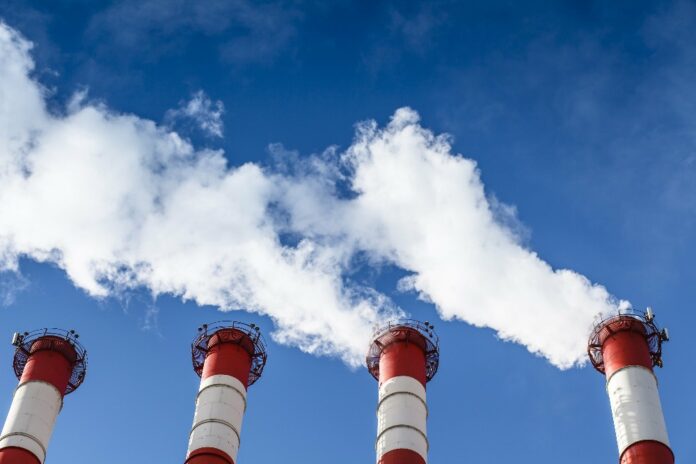I have written about carbon capture projects and technologies on many an occasion over the last 12 years. At the same time, I have watched both fossil fuel companies and energy providers back away from government heavily subsidized projects aimed at building carbon capture into their existing infrastructure, or new builds. But with the Inflation Reduction Act recently passed in the United States, carbon capture has been given new impetus and financial incentives to become a mainstream tool in our battle to mitigate global warming.
Suddenly, carbon capture has legs. Why? Because the Act includes a carbon capture subsidy. Capturing carbon dioxide (CO2) now provides polluters with an $85 per ton tax credit. And even better, the process for getting the tax credit is simpler, and who can apply for it is now open to even very small projects. The cement industry, natural gas producers, and coal-fired power plants are now armed and ready to jump on the carbon capture bandwagon.
What are the expected results in the United States? According to the Carbon Capture Coalition, which represents more than 100 companies, unions, and conservation and environmental policy organizations, carbon capture projects are expected to grow by 1,300% from now to 2035. At a recent virtual briefing held by the Carbon Capture Coalition, Shannon Heyck-Williams, Lead Climate and Energy Policy Advisor for the National Wildlife Federation noted, “we’ll need to deploy a critical mass of carbon capture, direct air capture, carbon-reuse projects, and related CO2 transport and storage infrastructure over the next decade. It’s a pretty big challenge.”
Heyck-Williams continued calling on policymakers to “pursue a three-pronged approach to get to net-zero, of capturing and managing emissions from industry and power generation, offsetting remaining emissions from hard to decarbonize sectors, and removing legacy emissions from the atmosphere.”
All it seems for industry players to get onboard to tackle climate change using carbon capture technologies was to get a bigger subsidy. Now, the industry has to deliver because, so far, carbon capture isn’t having any impact on carbon emissions in the atmosphere. According to the
Mauna Loa Observatory, in Hawaii CO2 readings show:
| Sep. 4, 2022 |
416.68 ppm |
| Sep. 4, 2021 |
413.43 ppm |
| 1 Year Change |
3.25 ppm (0.79%) |
The International Energy Agency (IEA) estimates that carbon capture technology’s contribution to CO2 emissions reduction would fulfil 15% of the total needed to keep mean atmospheric temperatures from rising beyond 1.5 Celsius (2.7 Fahrenheit). So these subsidies worth tens of billions of dollars represent only a 15% solution to our CO2 emissions problem.
Where the real solutions to drive down emissions will come from is in improvements to energy efficiency (40%) in our built infrastructure, and in rapid electrification of using renewable energy (35%).
In Canada, the same is true for legacy buildings other than individual homes. Canada’s legacy building infrastructure has an embodied carbon footprint that generates between 30 and 40% of the country’s total greenhouse gas emissions. That’s more than the emissions coming from the country’s oil sands.
Embodied carbon footprint numbers in the U.S. are similar. And hopefully, getting tax credits and other incentives will be easier in America than in Canada, where our programs are swaddled in red tape.
Canada’s energy retrofits only address single-family homes even though a significant number of Canadians in cities live in legacy multi-unit residential buildings. For single-family homeowners to get government grants and interest-free loans, there are long delays between applying and approval. That’s because the government requires every applicant to have a home energy audit. A shortage of energy efficiency auditors means applicants have to wait as much as a year or more before being approved.
As for creating a head of steam on new renewable energy projects such as wind, solar, geothermal, and small hydroelectric, with or without subsidies and incentives the IEA reports that 2021 saw a 6% growth in capacity and 2022 is expected to see an increase of 8%. This is happening despite the rise in material costs and supply chain disruptions caused by the global pandemic and the Russian invasion of Ukraine. So nothing it seems is holding back the rise in renewable energy sources. Even with this level of growth, it is not enough to tip carbon emissions in a downward direction. What’s needed is a doubling and tripling of capacity annually to do that.
And then there are the numbers. Currently, only thirty working projects exist capturing 40 Megatons of CO2 annually. That’s a far cry from what the industry needs to produce, 7 to 10 captured Gigatons annually. Without a rapid buildout that the Inflation Reduction Act may encourage in the U.S. at least, carbon capture will fall well short of being the global panacea that fossil fuel and energy utility companies are hoping for and that governments are promoting while providing tens of billions in subsidies.

















[…] a September 5th posting here I noted that 40% of climate-changing carbon emissions come from our built infrastructure. I further commented that retrofitting older structures would do more to reduce our emissions than […]